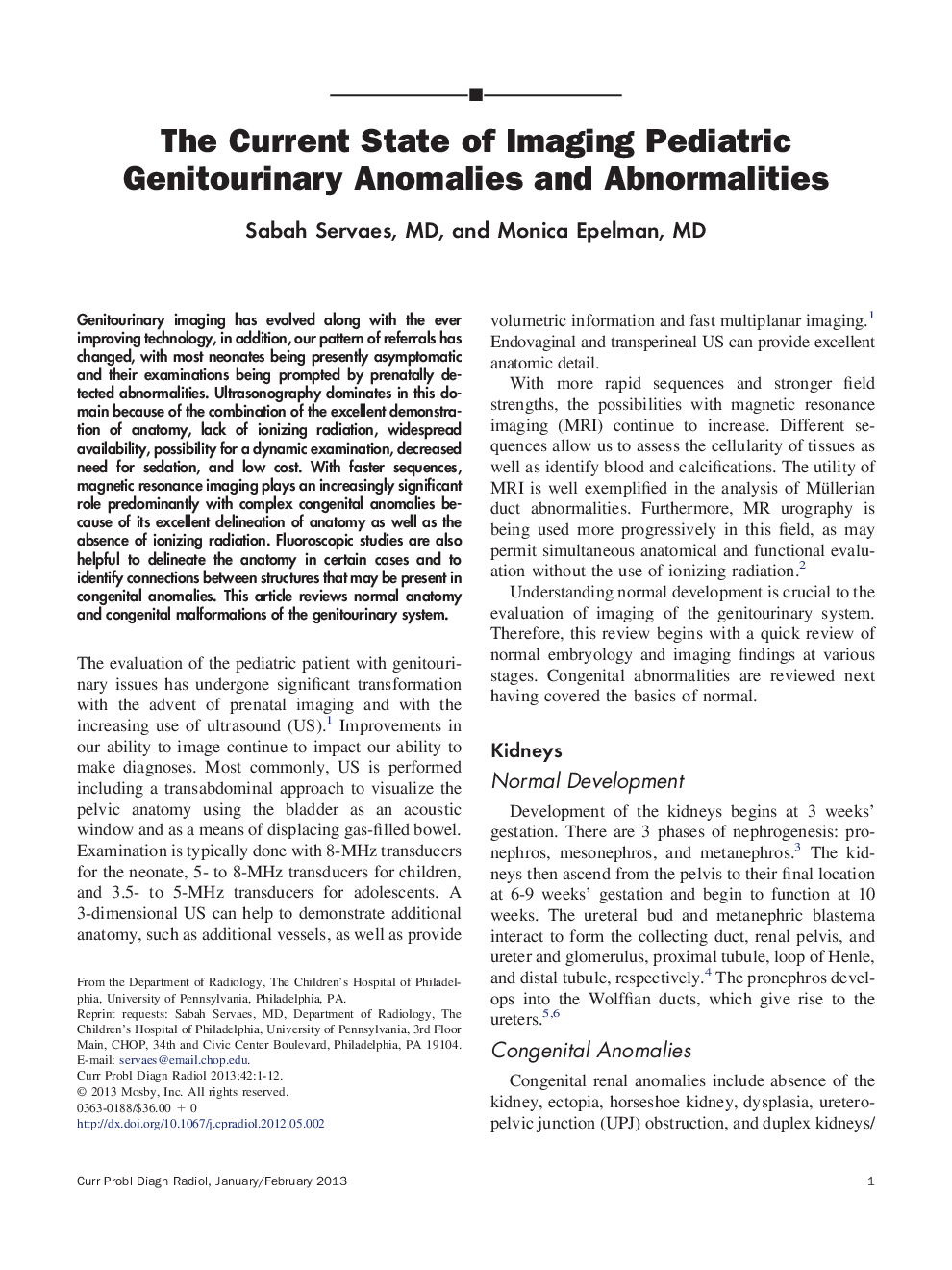| Article ID | Journal | Published Year | Pages | File Type |
|---|---|---|---|---|
| 4223556 | Current Problems in Diagnostic Radiology | 2013 | 12 Pages |
Genitourinary imaging has evolved along with the ever improving technology, in addition, our pattern of referrals has changed, with most neonates being presently asymptomatic and their examinations being prompted by prenatally detected abnormalities. Ultrasonography dominates in this domain because of the combination of the excellent demonstration of anatomy, lack of ionizing radiation, widespread availability, possibility for a dynamic examination, decreased need for sedation, and low cost. With faster sequences, magnetic resonance imaging plays an increasingly significant role predominantly with complex congenital anomalies because of its excellent delineation of anatomy as well as the absence of ionizing radiation. Fluoroscopic studies are also helpful to delineate the anatomy in certain cases and to identify connections between structures that may be present in congenital anomalies. This article reviews normal anatomy and congenital malformations of the genitourinary system.
